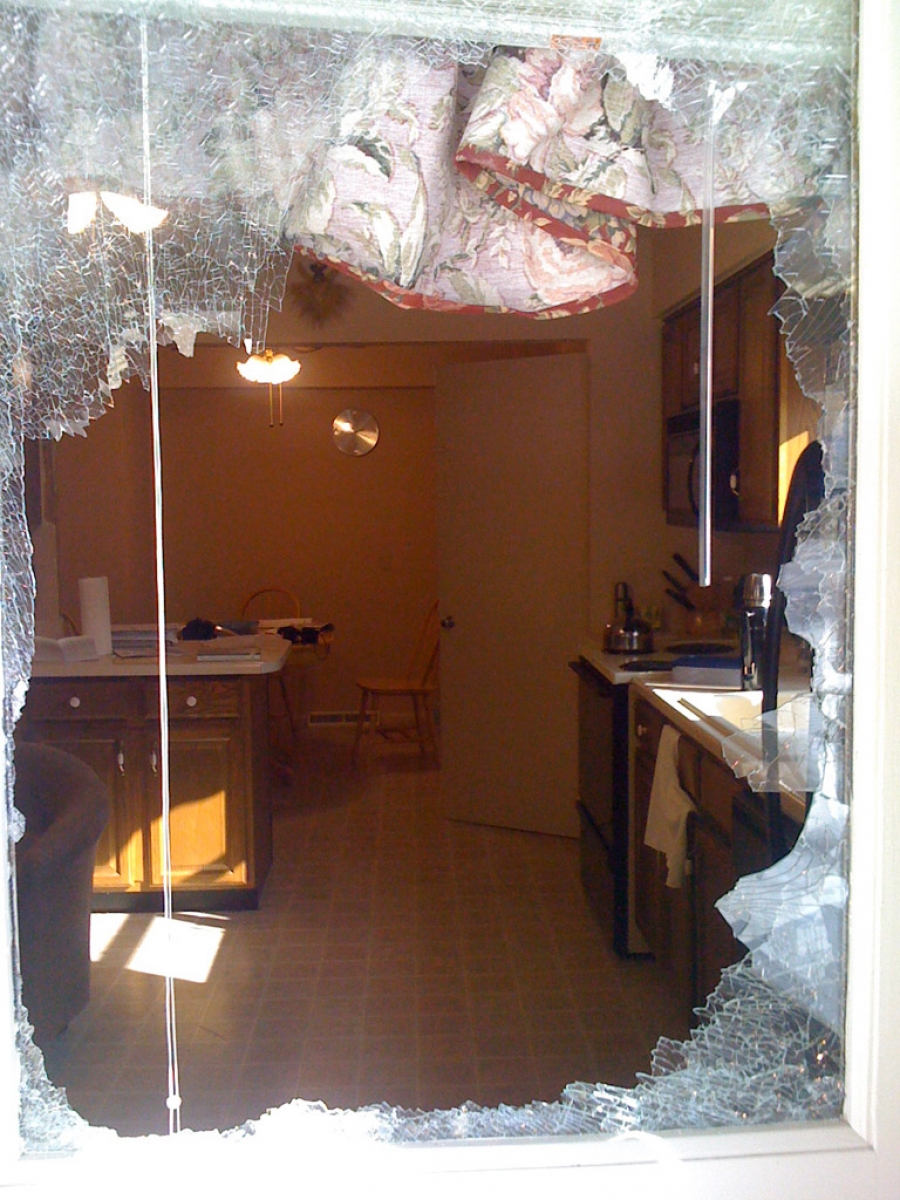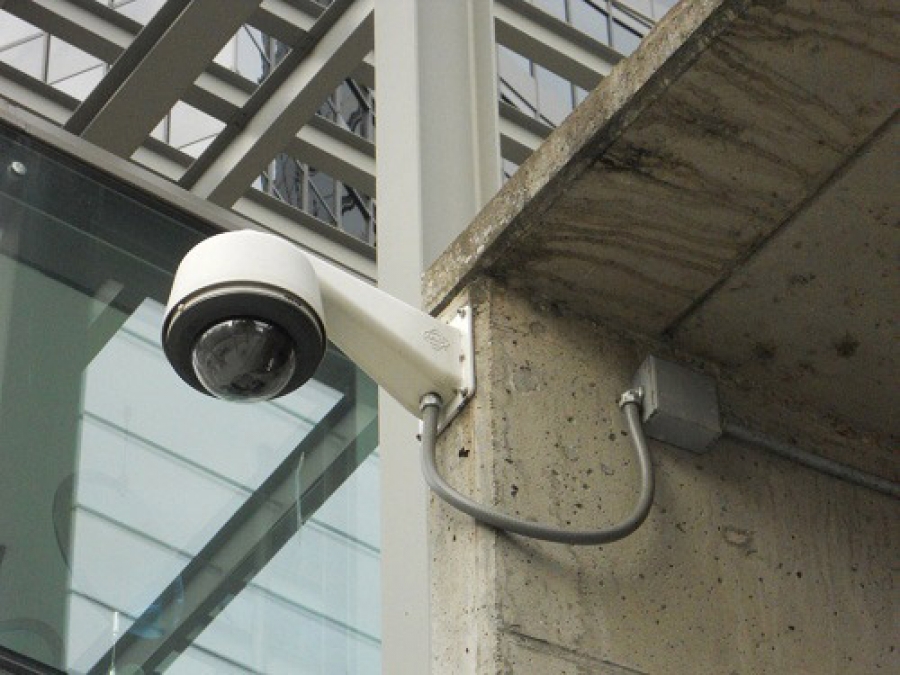Want the Best Advice on Home Security?
Ask the experts – the thieves themselves.
 (CC BY 2.0) by orphum
(CC BY 2.0) by orphum
While it's easy to think we're doing enough to protect our homes and cars by locking them, tucking valuable items out of sight, and maybe installing an alarm, we may only be fooling ourselves with a false sense of security. Just ask these guys.
Walter T. Shaw, a former member of the "Dinner Set Gang" and co-author of "A License to Steal," spent 11 years behind bars after committing thousands of burglaries during the 1970s and 1980s. Times and technology may have changed, but much of his advice is as relevant today as it was 40 years ago.
Shaw was an old hand at relieving wealthy homeowners of their excess jewelry when Matt Johnston and Jon Douglas Rainey arrived in this world in the mid-1970s. Johnston and Rainey started their criminal activities as teens, either stealing cars or breaking into homes. Fortunately, they were caught early enough to turn their lives around and parlayed their criminal pasts into a gig as co-hosts for the Discovery Channel series It Takes a Thief, where they demonstrated their burglary skills on-camera to show homeowners exactly how vulnerable they were.
Shaw, Johnston, and Rainey all have done their time and are paying back society by divulging what goes on inside the mind of a burglar and what you can do to protect your home and family from people like them. Here are a few insider home security tips that can discourage or prevent a break-in/theft at your home.
Don't tell the world what you're doing
![]()
What do you do when you buy something new or plan to go on vacation? You tell people about it. Forty years ago, the potential risk was limited to a casual conversation in the grocery store or at the hairdresser's being overheard by someone who might take advantage of you. Such a localized risk seems miniscule these days, compared to the by-the-minute updating, friending, and sharing people do via Facebook, Twitter, and other social media.
Today, a thief can gather substantial information on his smartphone about where you live, where you are, and what you're doing RIGHT NOW – much of it helpfully provided by you, your "friends," and their friends. Your social sharing may be enough to put your home at the top of a thief's "to do" list. Unless you want to "share" your laptop, flat screen TV, and other valuables with a thief, be discreet about travel plans and remember that there is no privacy in social media.
_by_swruler9284.jpg)
Cover the back
The most common entry and exit point for a burglar is the back door, especially a sliding patio door. Why? It's less visible from the street, and if the police do show up they'll probably come to the front door first. Keep all back windows and doors locked and use a bar-type device to prevent patio doors from opening. Put alarm and video surveillance warning signs and stickers in clearly visible locations at the back as well as the front of your house.
Change the code on your garage door opener
Just think about how many garage doors there are in your neighborhood. Hundreds? Thousands? Now, how many brands of remote control openers are there? Ten? Twenty? And how many different brands do you think the contractor who built dozens of these houses bought? Exactly.
That's why thieves drive around with several different brands of remote controls - checking which ones will open doors in the neighborhood. Many garage door remotes enable you to change the factory default code to your own, more secure, custom code. Do this as soon as possible after the door is installed.
Daylight is not a deterrent
While we tend to think that thieves operate under cover of darkness, that's not necessarily the case. Most thieves would rather have the house to themselves; with today's busy households, thieves may find their best opportunity comes during the day, when adults are at work and kids are in school. Professional thieves may do a "dry run," ringing doorbells and canvassing the neighborhood under some false pretense just to see which houses are occupied. Be sure your doorbell is working properly so you don't get surprised by a thief in the front hall who was convinced you weren't home.
_by_Aine_D.jpg)
Barking dogs are not a burglar's best friend
You don't need a big scary-looking attack dog to keep burglars out – an excitable little pooch with a persistent bark makes a great alarm system. Barking dogs draw attention, and professional burglars will take a pass on a house that presents that kind of potential risk.
No one can get near our rural home without our pup sounding off, repeatedly. We don't discourage it, but we did train her to turn it off when we need her to. If you're not in position to have a real dog, you can buy a barking dog alarm, which works on a motion sensor. Barking dog alarms start with a single bark and ramp up in ferocity the longer the intruder sticks around.
Garbage is research material
You may be done with everything you put in the trash, but what kind of personal information are you providing to the guy who's scoping out your neighborhood looking for a score? The cardboard box your 50" big screen TV came in is a great advertisement for thieves. Break down cartons from big ticket items and don't put them out until garbage day. Buy a shredder to destroy papers with personal information (such as account statements) to keep thieves from assembling enough information to steal your identity.
Video surveillance is effective
_by_SierraTierra.jpg)
The last thing a thief wants is to be caught on tape in your home, knowing it could end up on the evening news or be used as irrefutable evidence in a courtroom. Thieves usually don't know exactly where cameras may be located, how to disable them, or if any video is being recorded off-site, so they'll likely pass on any targets that advertise video surveillance. With today's technology, you will find plenty of options for security cameras and recording equipment that you can monitor or set remotely with your smart phone. "Home Security Made Easy and Inexpensive" has some excellent tips on home alarm and surveillance systems.
_by_Ada_Be.jpg)
Thieves avoid kitchens
Why? Because kitchens have too many places to hide things and take too long to search, which suggests the kitchen is likely the best hiding place for valuables. That box of Cheerios in the bottom of the pantry or the dog's kibble bin may be just the place to stash a baggie holding your grandmother's pearls or your rainy day cash. The first place thieves head for is the bedroom, because that's where most people "hide" their jewelery, money, and other valuables. So if you're thinking about getting a safe, consider installing it somewhere in the kitchen.
On the It Takes a Thief website FAQ, Rainey and Johnston make a couple of suggestions about home security to keep in mind.
What are the most common home security mistakes?
Rainey: "The most common mistake is feeling too safe. People think they are safe because they've lived in a place for a long time, or they know their neighbors, etc. You can become too comfortable for your own good."
Johnston: "Not setting your alarm. Or not locking the windows and doors."
What one thing would Rainey and Johnston suggest?
Rainey: "As long as your house is not the most appealing house on the block, then you should be safe. If a thief thinks he can get in and out of your house the fastest, especially compared to your neighbors, then you're the target."
Johnston: "Put your alarm system on!"
It's always a good idea to listen to the pros. Stay safe.

Rick Atkinson
Rick Atkinson works from (and on) his century-old farmhouse in New Brunswick, Canada. His professional and freelance career has ranged widely, contributing to an unusual mix of experience: as musician, retail manager, video producer/editor, CAD designer, woodworker, DIYer, beekeeper. He keeps a close eye on global events, particularly energy and climate change, new technologies, and long-term social and economic trends. Currently, Rick freelances in Kitchen & Bath cabinet design and CAD drawings for a custom cabinet shop. After hours, he creates original woodworking projects and plans, and writes about home improvement and design on his blog,StonehavenLife.com.


_by_orphum.jpg)
_by_Aine_D.jpg)
_by_swruler9284.jpg)
_by_Ada_Be.jpg)
_by_Lee_J_Haywood.jpg)
_by_SierraTierra.jpg)
